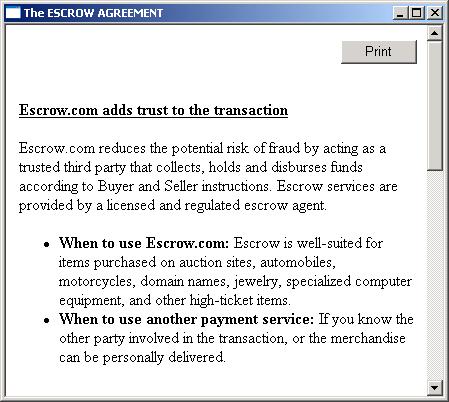Qhost.C
Summary
Qhost.C, a variant of Qhost, is a Trojan. Qhost.C tries to steal confidential logon information related to Escrow.com's website.
Removal
Based on the settings of your F-Secure security product, it will either move the file to the quarantine where it cannot spread or cause harm, or remove it.
A False Positive is when a file is incorrectly detected as harmful, usually because its code or behavior resembles known harmful programs. A False Positive will usually be fixed in a subsequent database update without any action needed on your part. If you wish, you may also:
-
Check for the latest database updates
First check if your F-Secure security program is using the latest updates, then try scanning the file again.
-
Submit a sample
After checking, if you still believe the file is incorrectly detected, you can submit a sample of it for re-analysis.
Note: If the file was moved to quarantine, you need to collect the file from quarantine before you can submit it.
-
Exclude a file from further scanning
If you are certain that the file is safe and want to continue using it, you can exclude it from further scanning by the F-Secure security product.
Note: You need administrative rights to change the settings.
Technical Details
Qhost.C is download from the following link:
- https://www.angelfire.com/planet/pom0/ag[REMOVED]]t.hta
Once this malware has been downloaded and executed it will show the following message:

Qhost.C silently adds the following strings to the Windows hosts file to redirect the user from the original Escrow website to the hackers' phishing site:
- 208.116.11.196 escrow.com
- 208.116.11.196 i-escrow.com
- 208.116.11.196 my.escrow.com
- 208.116.11.196 www.escrow.com
- 208.116.11.196 www.i-escrow.com
Qhost.C looks for the hosts file in the following locations:
- C:\Windows\hosts
- C:\Windows\system32\drivers\etc\hosts
- C:\WINNT\system32\drivers\etc\hosts
The phishing site looks identical to the original website, only the link is different. Here is a sample screenshot:

)
Protect your devices from malware with F‑Secure Total
Protecting your devices from malicious software is essential for maintaining online security. F‑Secure Total makes this easy, helping you to secure your devices in a brilliantly simple way.
- Award-winning antivirus and malware protection
- Online browsing, banking, and shopping protection
- 24/7 online identity and data breach monitoring
- Unlimited VPN service to safeguard your privacy
- Password manager with private data protection
More Support
Community
Ask questions in our Community .
User Guides
Check the user guide for instructions.
Submit a Sample
Submit a file or URL for analysis.